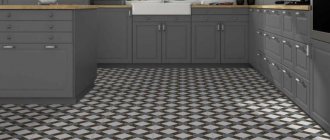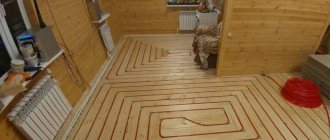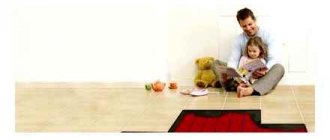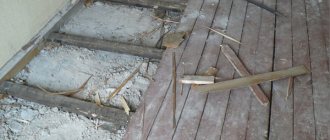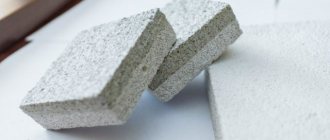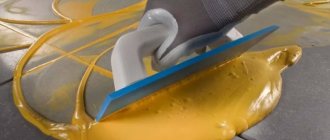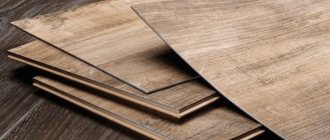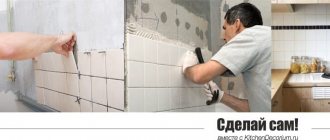The type and properties of the floor covering are the determining factors in the formation and maintenance of a favorable microclimate in the room. Warm floor tiles made from substances with a porous structure can give a feeling of comfort without installing a heating system. Adults and children get the opportunity to travel around the house barefoot. This is good for health, saves energy costs and eliminates the need to purchase different-sized indoor shoes.
What are warm floor tiles
The effect of a heated surface is created due to the presence of small air pores in the tile. The fine-cell structure is formed as a result of the use of special technology or the use of porous natural materials. Air bubbles are distributed evenly throughout the entire volume and serve as a good insulator.
The use of floor slabs made of material with low thermal conductivity creates a double positive effect. There is no feeling of cold upon contact, walking without shoes becomes pleasant. It is easier to maintain a comfortable temperature in an apartment or house.
Warm floors can be installed in residential and auxiliary premises. It is especially pleasant to walk along it in a cool corridor, in the bathroom, in the kitchen.
Carpet
This is a type of flooring that differs from other types in its softness. Sold in rolls, where each option may contain a drawing or a beautiful ornament.
The difference between installing carpet and laminate is already noticeable at first when it comes to changes above the chimney. In this case, only the floor covering and cement mortar remain. Thickness - 4 and 1 cm.
The layers under the pipes remain unchanged because they are not affected by changes in the coating. The thickness of the concrete and two insulation materials is 22, 2 and 4 cm.
When calculating, the same temperature is set as in the first option (40°C). After calculations, the upward flow decreased noticeably - 60.1 W/m², and the maximum room temperature - 25 °C.
Types of warm floor tiles without heating
A comfortable, non-cold coating is created using:
- foam ceramics;
- PVC tiles;
- cork slabs.
Foam ceramics is an innovative product of the Japanese company Inax. According to the advanced technology developed by the manufacturers, the ceramic mass is evenly filled with air bubbles during firing. The thermal insulation layer makes the material warm to the touch. Durable coating increases resistance to mechanical stress. Japanese tiles are equipped with an antibacterial protective layer and are ideal for flooring in rooms, kitchens and bathrooms.
PVC tiles consist of several layers: protective, decorative, main and base. The base is formed by foamed polyvinyl chloride with a thickness of 2-3.5 mm. Available in various colors and can be installed in any room.
Cork slabs are obtained by processing natural material with saturated steam. The air gap is created due to the porous structure of the original substance. Experts characterize it as the best option for children's rooms. Recommended for the kitchen if coated with two layers of water-based varnish.
A common feature is the ability to operate without heating or in combination with it.
Laminate
This is a type of wood board with fibers that is very dense. The main layer is a decorative protective film.
Before starting calculations, all details are clarified. In addition to the main coating material, cement mortar and insulation are also considered.
If the room area is 50 m², then the thickness of the insulation, laminate and mortar is 4/1/0.2 cm.
The layers under the pipes will also be of three types: concrete and two insulation materials. The thickness of the elements under the pipe is 22, 2 and 4 cm.
After selecting the average coolant temperature, for example 40 °C, the upward flow values will be 72 W/m², and the maximum floor temperature will be 26 °C. These calculations allow you to determine which coating is best suited.
Which floor tiles are warmer?
To determine the warmest floor covering, the main characteristics are compared. The most important parameter is the thermal conductivity coefficient. The lowest value indicates better insulating properties. When contacted, such a surface is perceived as cool and pleasant. With additional heating, it takes longer to heat up and cools down more slowly.
| Name | Dimensions, mm | Thermal conductivity coefficient, W/m*oK | Service life, years |
| Warm ceramic foam tiles | Various configurations and sizes | 0,045-0,08 | About 100 |
| PVC tiles | Squares 300x300, 500x500, 650x650, rectangles 100-400x1.5 | 0,25 | 7-10 |
| Cork tiles | Squares 300×300, 450×450 mm, rectangles: 450×150, 600×300, mm | 0,043 — 0,25 | 10 |
Warm ceramic tiles and some types of cork tiles have the lowest conductivity effect. Foamed ceramics are more versatile and durable and are slower to become dirty. Using it as a kitchen covering will minimize cleaning efforts.
Warm floors can be installed using porcelain stoneware or tiles. They have the same composition and differ in firing modes during production.
Tile and porcelain stoneware
Tiled and porcelain tiles are cold materials: their density is high, their structure is pore-free, and their thermal conductivity is quite high. A comfortable temperature can be obtained when laying on a heated base. In multi-storey buildings, electric heated floors are used; in private buildings, water heating is also suitable.
For electrical heating, a cable or film with infrared radiation is used.
Advantages of operating a device with IR floor:
- less energy is consumed;
- elements do not oxidize or corrode;
- a failed module can be easily replaced.
The disadvantages include the high cost of acquisition and installation.
The water system is connected to heating; its design is more expensive than an electric one, but operation will cost much less.
The choice between granite and tile is made based on a comparison of their main characteristics.
| Name | Thermal conductivity coefficient, W/m*oK | Water absorption,% | Tensile strength, MPa | Service life, years |
| Porcelain tiles | 1,5-3,0 | <0,5 | 35-50 | >50 |
| Ceramic tile | 1,05 | 3-5 | 25 | 30-40 |
In all respects, preference should be given to porcelain stoneware. Due to its greater thermal conductivity, it will heat up faster and take longer to cool down. An additional advantage is uniform heating and energy savings.
Video description
Video about what a heated floor is and what coating is best to use for it:
- Foamed linoleum. The structure of the material is characterized by its large thickness and low heat transfer, which makes it unsuitable as a heated floor finish.
On a note! It is still acceptable to use wood trim over a heating underlay. However, operating conditions must be strictly observed - temperature (not higher than 26-27°C) and humidity conditions must be optimal and constant.
Pros and cons of warm tiles
Each type has characteristic advantages and disadvantages. Knowing them will help you decide on the choice of coverage.
Foam ceramics
Pros:
- the best warming effect;
- antibacterial spraying;
- long service life;
- resistance to dirt, moisture, mechanical and chemical influences;
- color fastness;
- ease of care;
- environmental cleanliness.
Minuses:
- cutting difficulties;
- danger of strong pinpoint impacts;
- high price: $90-100/sq.m.
The period of use is short, all the disadvantages have not been fully identified.
PVC tiles
Pros:
- acceptable price;
- high strength;
- good sound insulation;
- moisture resistance;
- installation and repair can be done with your own hands;
- possibility of laying on linoleum, plywood, concrete;
- protective layer and anti-slip coating;
- easy to cut.
Minuses:
- colder to the touch than ceramic foam and cork;
- some types consist of environmentally unsafe substances;
- not exposed to solvents.
Cork tiles
Pros:
- has an elastic and soft surface;
- forms the correct arch of the foot in children;
- has a positive effect on people with orthopedic problems;
- the main component is a substance of plant origin;
- due to antistatic properties, it does not become covered with dust for a long time;
- reduces noise levels;
- has an affordable price.
Minuses:
- some types are made using resins and may be allergenic;
- damaged when sharp objects fall to the floor;
- Recesses from heavy furniture remain;
- upon contact with rubber it turns black.
Installation nuances
- In any home there are cold areas: unheated corridors, places near the entrance and balcony doors. The problem of insulation is solved simply: warm tiles are combined with a water, cable or infrared heating system.
- Electricity consumption will be minimal when using a water system or using IR film. Electric heating will require more time to heat the floor and more money to operate.
- The additional heating device begins with laying heat-insulating material under the cable or IR film. Otherwise, the neighbors below will have a significantly warmer ceiling.
- When laying PVC, special attention is paid to the selection of tile adhesive in order to prevent cracks during seamless joining. It is best to proceed from the manufacturer's recommendations. Before laying, the tiles are kept in the room for 24 hours for acclimatization. For the bathroom, moisture-resistant glue is selected.
- A water or infrared heating device is recommended under the plug. The electrical system will cause the elements to dry out and peel off.
Materials Not Recommended
When looking for a solution to the question of which floor covering is best to choose for a warm water floor, you should understand that not all materials offered on the modern market are suitable in terms of characteristics for specific operating conditions. Therefore, it is not recommended to use the following varieties:
- Parquet. Wood does not tolerate temperature changes well. So, when heated to about 28-30°C, it begins to dry out, crack and deform.
- Carpet. Due to the thickened dense structure, the material conducts heat poorly. Therefore, laying it on top of heating elements will make heating ineffective.
